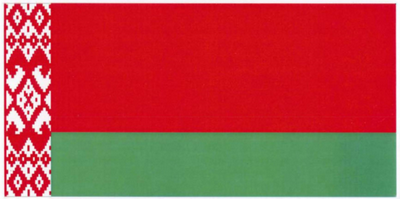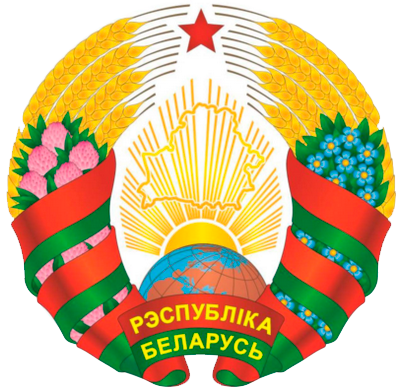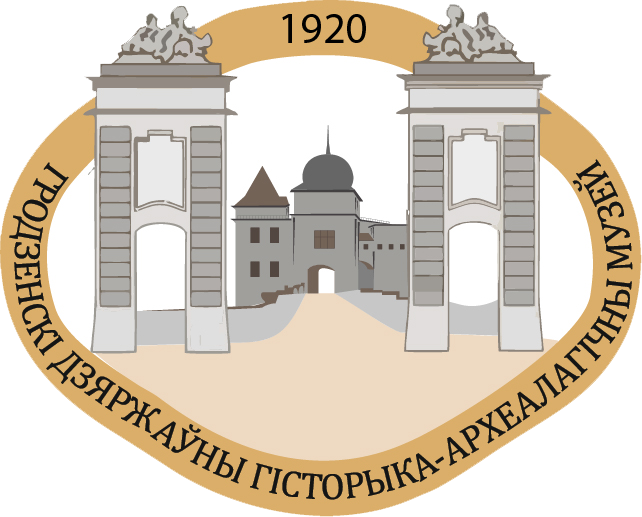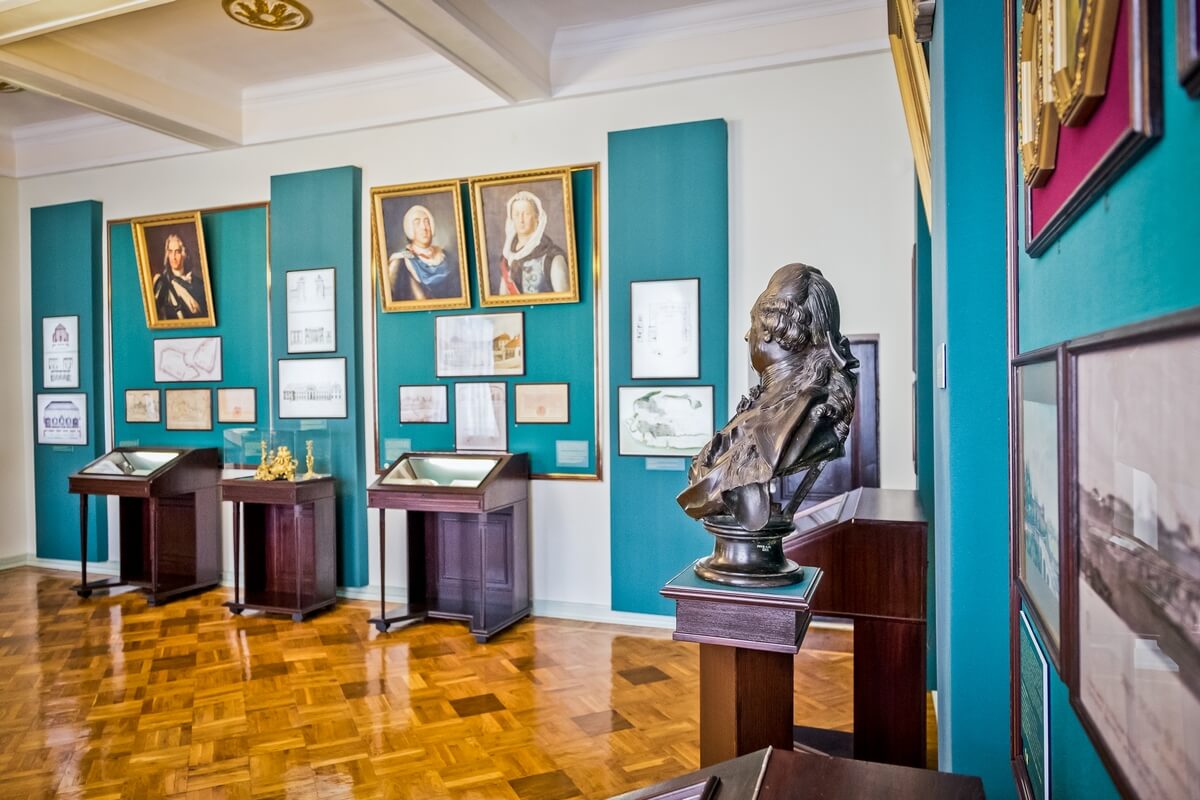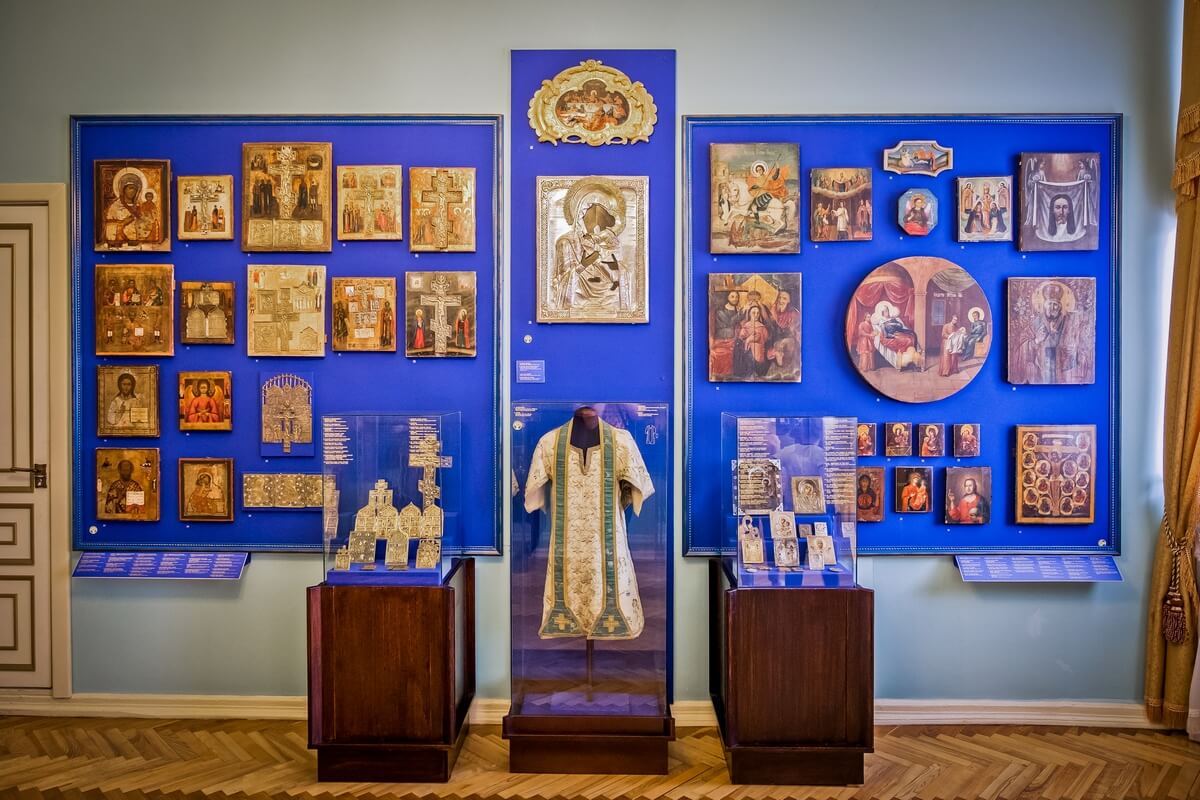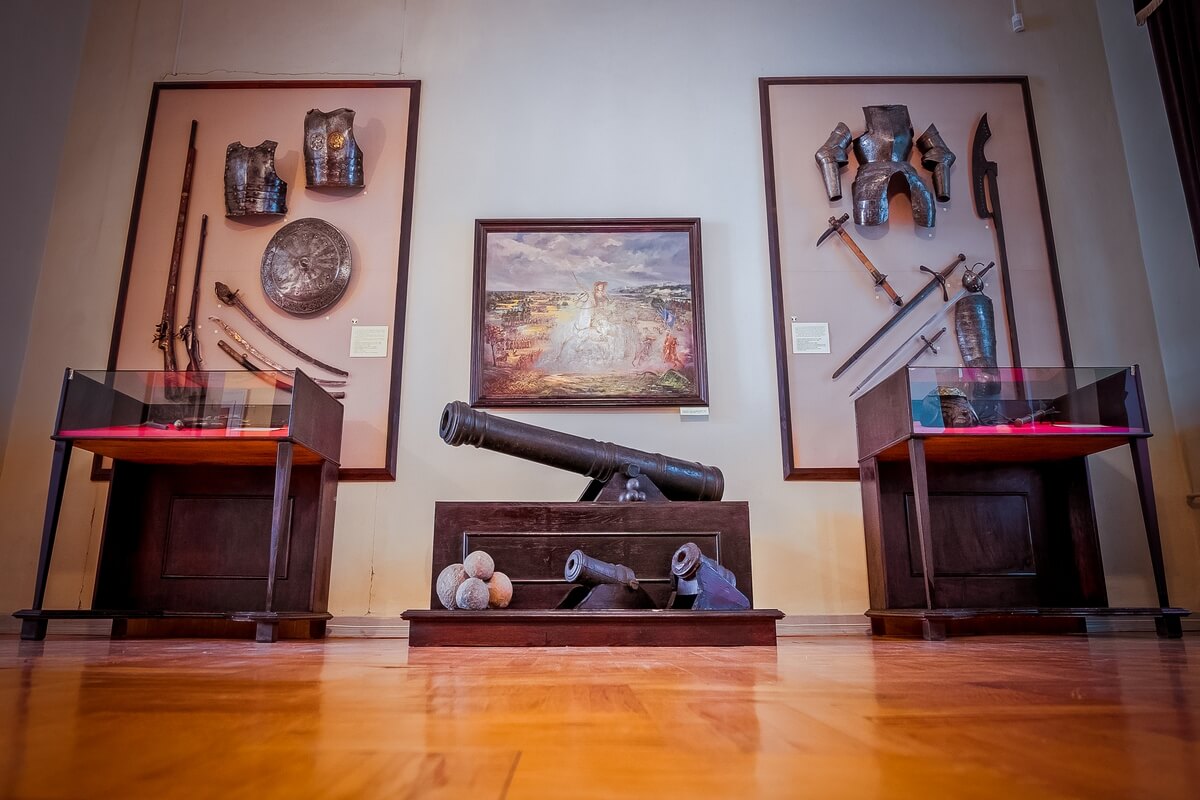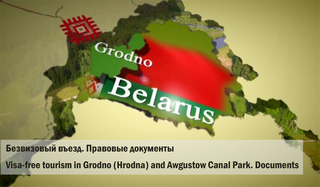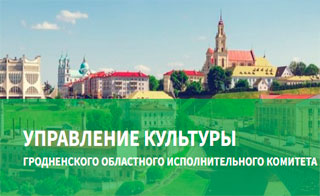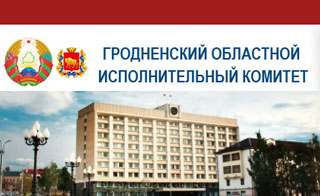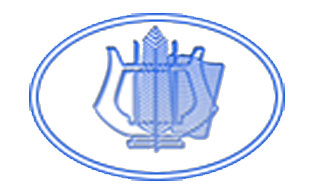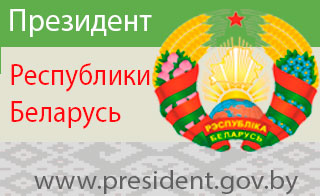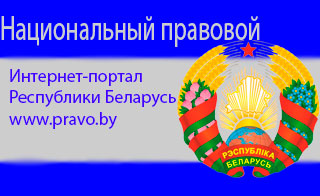It was the idea of Augustus II, the king of Poland and the grand duke of Lithuania, to build a new royal palace in Hrodna. The palace was to become both the royal residence and the place to hold the sessions of the general Sejm of the Polish-Lithuanian Commonwealth. It was built, however, during the reign of Augustus III.
The project of the palace was conceived by Carl Frederick Pöppelmann, court architect from Dresden. The construction lasted from 1737 until 1742.
The palace was in the shape of an inverted letter U making up a large front yard, the cour d’honneur. The building itself was proportionate, luxurious and rococo style. The front yard was flanked by two single-storey buildings, the guardhouse and bakery. Between them, surviving until today in their original form, are the fence and entrance gate, and at the top of their pylons are the sculptures of mythological creatures, sphinxes and the putti riding on their backs. The columns of the fence are crested by the helmets with the military paraphernalia.
The façades of the palace were decorated with pilasters, cartouches with masks, variously shaped moldings. The splendor of the palace’s look was further emphasized by the combination of a rich brick red color of roof tiles and the white and pink façades.
The palace’s main entrance led to the Hall of the Guards decorated with fresco paintings. Near it were the first royal antechamber (the Oval Hall), Senators’ and Deputies’ Halls. All of them were richly decorated with molded cartouches and rocaiiles, frescos imitating architectural features. Royal suits were in the right wing of the palace; the rooms for courtiers, servants and guards were in the left.
The front yard was flanked by two single-storey buildings, the guardhouse and bakery. Between them, surviving until today in their original form, are the fence and entrance gate, and at the top of the pylons of the latter, are the sculptures of mythological creatures, sphinxes and the putti riding on their backs. The columns of the fence are crested by the helmets with the military insignia.

As the palace was built opposite the Old Castle, the former royal residence, eventually, the name ‘New Castle’ stuck.
During the Stanislaw August Poniatowski’s reign, the palace undergone a renovation supervised by Giuseppe Sacco, a court architect from Italy, and decorator Szymon Mańkowski. Interiors were remade with an emphasis on neo-classical style.
The very first session of the general Sejm in this palace was held in 1744. The last Sejm of the Polish-Lithuanian Commonwealth that ratified the second partition of the state between Russia and Prussia was held here in 1793.
During the national liberation uprising of 1794, on September 30 of that year, Tadeusz Kosciuszko, its leader, held a meeting in the New Castle with the commanders of the rebel units of the Grand Duchy of Lithuania. It was here that the king Stanislaw August Poniatowski signed his abdication in 1795. Thus, the Polish-Lithuanian Commonwealth was finally partitioned between Russia, Austria and Prussia. Russian emperor Paul I ordered Poniatowski to leave Hrodna for Saint-Petersburg in mid-February 1797.
The palace was then given to the Russian Ministry of War. First, a military school was opened here and later a military hospital. In mid-19th century a major overhaul of the palace took place. Both the Oval and the Deputies’ Halls were remodeled into several rooms.
Great changes in the palace’s architecture happened during the 20th century. The building suffered a considerable damage during the battle over the city in 1944. The restoration of the palace and its adjustment to the needs of a bureaucratic institution was supervised by architect U. Varaksin.

In 1991 it was given to cultural institutions; its main building and the left wing were given to the museum. The building’s interior was remodeled creating enfilades of exhibition halls which were partially adjusted to the needs of storing the museum’s collections.
Now, the exhibitions ‘Preserved Valuable Artifacts’, ‘Sacred Art’, ‘The Wonderful World of Nature’, ‘Antique Interior Decorations’, and ‘Weapon of the Past Centuries’ are on display in the New Castle. In the Senators’ Hall, temporary exhibitions are displayed.

